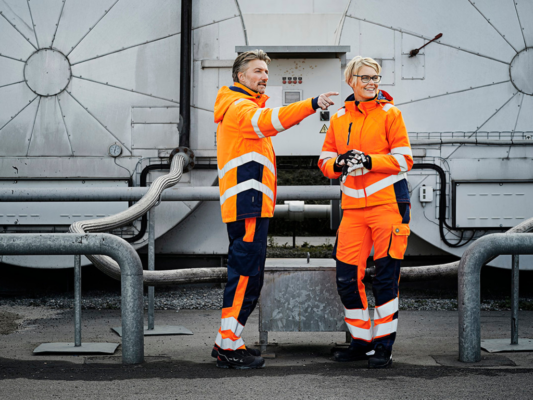No products in the basket.
Head Protection, PPE
What is EN 443?
What is EN 443?
Officially, EN 443 is the standard which is used to test helmets for firefighting in buildings and other structures. It’s the benchmark standard specified by the Fire and Rescue Services in the UK and other countries. There are some other organisations which use the standard, for example NHS Ambulance Trusts who require it when head protection is worn when attending a hazardous environment, such as a car accident.
EN 443 is an incredibly stringent standard, designed to make sure that the wearer of the helmet is protected from the most extreme situations they may find themselves in – for example burning beams falling on the wearer, whilst they are inside a confined space. It also protects against extremely high levels of heat – more on that later.
Are there different classes?
The short answer is no. However, it’s not quite as simple as that. Some helmets meet some of the requirements, but not all. This is worth bearing in mind, as a helmet which only meets some of the requirements won’t be able to be used in a fire fighting environment.
So, what does the testing involve?
Before the actual testing takes place, the helmet needs to pass an inspection. It must comply with all of the following requirements listed below:
- No sharp edges
- No materials that may pose a risk to the wearer’s health
- No degradation of any form after being cleaned in accordance with the manufacturer’s instructions
- Any accessories including visors, neck guards etc must not impair the function of the helmet in any way (i.e. it must pass all of the impact/heat tests with the accessories attached)
- The helmet must be worn by somebody wearing full firefighting equipment, whilst crawling through confined spaces, without them experiencing any discomfort
- The helmet must not impede the wearer’s field of vision
If the tester is happy, they can then move onto the physical tests:
- Dropping a striker onto the crown, to simulate vertical impact
- Firing a ball bearing at the shell of the helmet
- A weight will be applied to the shell, and it cannot deform more than a specified amount
- When the weight is removed, it must spring back to its original size
- A weight is applied to the harness, to make sure it doesn’t detach from the shell
- The helmet is exposed to intense heat, the temperature inside the helmet cannot exceed a certain threshold
- Whilst heated, the first two tests (striker/ball bearing) must be repeated. The result must be the same, to show that the shell isn’t weakened in any way by the heat
- Any visor/glasses must meet the relevant tests for protective eyewear
- When molten metal is poured onto the helmet, none may penetrate the shell
- The helmet is put in front of a flame, to check it will not burn or melt in contact with sustained flame
- It is checked for electrical conductivity, whilst dry and whilst wet
- Various chemicals are poured onto the helmet, to ensure resistance to corrosion
As you can see, the EN 443 test is all-inclusive and is designed to protect against any situation a firefighter may find themselves in. This is critical because the reality is for many firefighters, they don’t know the exact details of a fire until they actually get there. They need a helmet which they can grab and take straight to a callout, knowing that whatever happens, they will be protected.
Any questions?
Feel free to get in touch. Our dedicated Emergency Services Specialist, Fred Trevvett, will be more than happy to fill you in on the finer details which we haven’t covered in this blog.
T: 0800 161 3661
Clad Safety is a trusted UK supplier of PPE for over 30 years with a team of technical experts who can assist you with any questions you may have. Call us on 0800 161 3661 or email [email protected]




